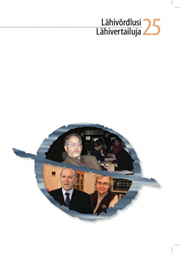Tekstin semanttiset sidokset ja lähisukukielen ymmärrettävyys
Semantic cohesion and the intelligibility of closely related language
Author(s): Pirkko Muikku-WernerSubject(s): Language studies, Language and Literature Studies, Semantics, Finno-Ugrian studies
Published by: Eesti Rakenduslingvistika Ühing (ERÜ)
Keywords: receptive multilingualism;phraseological unit:thematic coherence; collocation; priming; Estonian; Finnish
Summary/Abstract: Similarity between closely related languages creates the prerequisites for mutual intelligibility. An interesting question is whether the comprehension of texts in are related language relies on lexical-semantic features which create text coherence.In logically built texts, the concepts connected in phraseological units are not linked with each other arbitrarily; rather, the cohesiveness of the text is based on language-independent principles.The coherence of a text is partly built on the collocational relationship of lexemes, in which a particular word, a prime, provides the semantic context for the lexical decision to the second word, the subsequent target. In a related language comprehension task, if the prime is familiar on the basis of the reader’sL1, the reader may be able to infer the meaning of the other word (target) even if the target is not cognate with its L1 equivalent and therefore not immediately recognizable. The process is facilitated by context: collocational preferences limit the available alternatives at least to some degree.The aim of this study was to find out what types of semantic relationships or associations facilitate the understanding of an unknown expression in a related language if it is textually connected to another word which the reader can recognize on the basis of his/her mother tongue. In this pilot study, Finnish-speaking non-linguists without any profficiency in Estonian had to translate a short Estonian text into Finnish and explain their choices of translation equivalents for certain words. The results show that connections between lexemes, for example relational antonym pairs, make the target word easier to understand. Correct translations also rely on encyclopedic knowledge: metalinguistic conceptions of coherent texts and the structure of semantic fields.
Journal: Lähivőrdlusi. Lähivertailuja
- Issue Year: 2015
- Issue No: 25
- Page Range: 191-216
- Page Count: 26
- Language: Estonian

